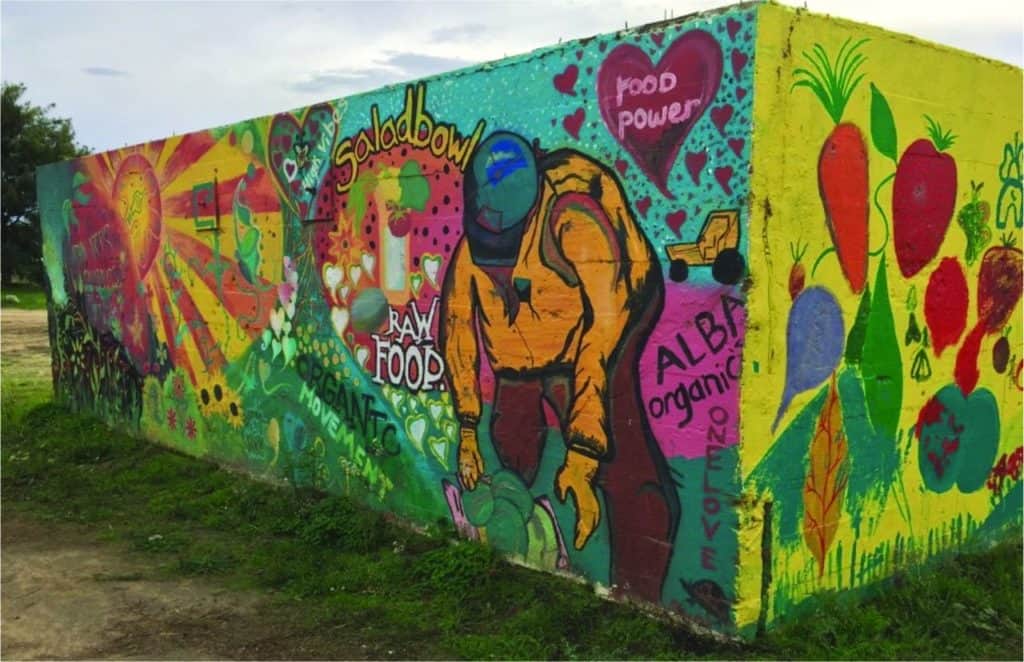Micah Elias is a PhD student in UC Berkeley’s Energy & Resources Group, and Robin Marsh is an agricultural economist and senior researcher with UC Berkeley’s Institute for the Study of Societal Issues. Together they recently published “Innovations in Agricultural and Food Systems Sustainability in California” in UC Press’s journal Case Studies in the Environment (the article is freely accessible here for a limited time). In this post the authors discuss barriers to sustainable farming, and how some California farmers and the organizations supporting them have innovated to overcome these barriers.
UC Press: In your new article you talk about barriers to sustainable farming and sustainable food systems. One of these barriers is “cheap food.” What are some of the hidden costs of cheap food, and how do we get consumers to recognize the value of sustainable agricultural products?
Robin Marsh: From the farmers’ point of view, those are the most important questions. Since WWII, this country has had food policies that are biased toward urban consumers and their needs, with incentives to increase productivity and reduce costs and risks, for instance, with heavy reliance on agrochemicals. Farm and supermarket consolidation are the drivers of cheap food, and US consumers have come to expect to spend no more than 10% to 15% of their disposable budget on food. We have also come to expect access to off-season imported food at cheap prices. The hidden costs are the environmental externalities of polluted land and water and associated human health costs, loss of wildlife habitat, exodus of farmers and their families from rural areas, and a history of extreme labor exploitation of farm workers. Awareness of these externalities are growing and more consumers are now willing to pay a price premium for sustainably grown food, as evidenced by organic produce shelves even in conventional supermarkets. But, this is really going to take a consumer revolution because we are habituated to buying more for less. I think one way to move this forward is to encourage more schools, communities and families to have gardens and to experience personally both the challenges and pleasures of growing food.
UC Press: As the current generation of sustainability-oriented farmers nears retirement, another barrier to more widespread sustainable farming practices is the lack of next-generation farmers to take over. What organizations are taking the lead in addressing this problem, and what are some of their innovations?

Robin Marsh: Yes, it was striking that nearly all the interviewed farmers were concerned about who would be taking over their farms when they retire, and whether they would keep up the regenerative and socially sustainable practices of the farm. Some farmers work to create interesting and profitable on-site jobs that appeal to their offspring like agrotourism and “value added” products and services. Another very important approach is to train and support former farm workers to become farmer operators, such as the work of the Agriculture and Land-Based Training Association (ALBA), which is featured in our article. ALBA succeeds because it approaches the problem holistically, helping new immigrant farmers to access land and capital (in partnership with FarmLink), and training in organic production, marketing, application for government grants (e.g CDFA Healthy Soils Program, USDA Beginning Farmer and Rancher Development Program, USDA Sustainable Agriculture Research and Education), and overcoming cultural barriers and discrimination. California definitely needs more such farmer incubators. One farmer we interviewed questions the orthodoxy of passing on farms to children (who don’t want to farm) or the highest bidder, saying he would welcome ceding his farm to hard working folks who share his philosophy on land stewardship never mind they don’t have any money! And I suspect he’s not alone.
UC Press: Another organization you highlight in your case study is the Capay Valley Farm Shop. What challenges did they overcome through innovation? What can farmers learn from them?
Robin Marsh: Capay Valley Farm Shop’s President, Thomas Nelson, shared their history since 2007 of success and failure, before reaching a good situation now mainly selling high quality produce to corporate clients with demanding chefs, such as Google and Airbnb. Initial brick and mortar shops did not work out, nor a formal cooperative structure, but, through trial and error, they found an aggregation local warehouse, farmer membership governance, “harvest to order” marketing and a state-of-the-art web presence have worked well. A key lesson learned is to persist in finding clients that are willing and able to pay a fair price for locally produced quality food.
UC Press: It seems like there are many economic and policy incentives for unsustainable agriculture. How do we line up incentives to better support sustainability-focused farmers? What kinds of support do they need?
Micah Elias: Creating incentives that support sustainability-focused farmers requires acknowledging and compensating farmers for more than the food they produce. Typically, farmers are only compensated for their harvest, when in reality farmers manage the land we all depend upon for services like water filtration, biodiversity, and carbon sequestration. To recognize and incentivize these services, we as consumers must pay for the extra work and resources required through certification like Organic, Rainforest Alliance, and Fair Trade and government policies must be created and supported such as the Healthy Soils Initiative. Neither producer certifications nor public subsidies are perfect, but they are a step in the right direction and need to be supported, improved, and expanded to help make a more sustainable food system.
Case Studies in the Environment is a journal of peer-reviewed case study articles and case study pedagogy articles. The journal informs faculty, students, researchers, educators, professionals, and policymakers on case studies and best practices in the environmental sciences and studies.
cse.ucpress.edu